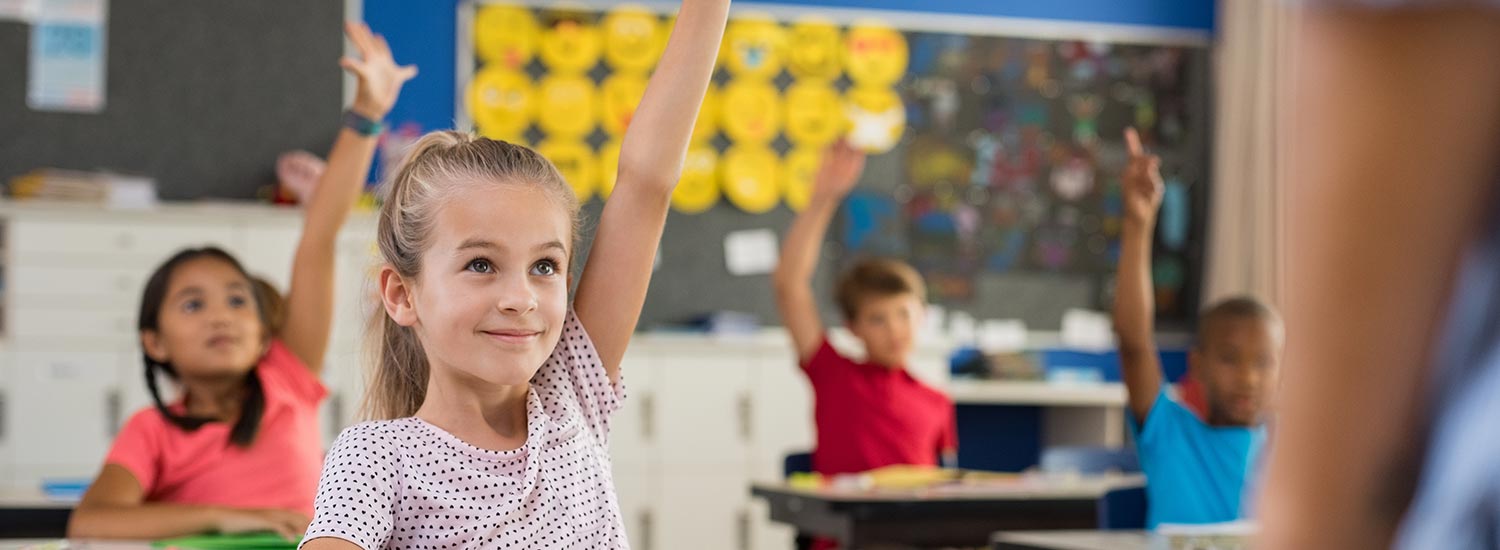Staying Focused on the Tasks at Hand
Distractions in a classroom setting can derail students from concentrating on the learning tasks at hand, and it can take time for students to regain their focus. In fact, studies show that it can take 25 minutes for a person to regain their focus after an interruption. One of the best ways to minimize distractions in the classroom is to provide a structured learning environment. Below is a look at the benefits of a structured class environment and the key elements of a structured classroom.
The Key Benefits of a Structured Classroom
"A structured classroom often translates to a safe classroom, one where students can enjoy themselves and focus on learning. In a structured learning environment, students are more likely to thrive and experience personal and academic growth."
- Derrick Meador, School Administrator and Former Teacher
A structured learning environment is the cornerstone of academic success for many students. In addition to minimizing distractions, students are able to thrive by receiving the intensive support they need to master new skills and concepts. Here are just a few of the many ways that a structured learning environment is beneficial to students:
- Students exhibit pride in their work
- Skill mastery is increased
- Students learn to operate independently
- Substitute teachers can easily step in and manage the classroom
Creating a Structured Classroom
A structured learning environment will not unfold on its own. Educators must take a proactive, innovative approach to classroom arrangements, curriculum design, and learning techniques. Most importantly, teachers need to clearly communicate goals and expectations from the moment students enter their classroom on the first day of school. Below are six tips to help you create a structured classroom.
1) Keep Your Class Size Small
"An increasing amount of evidence suggests that students in smaller classes in the early school years, on average, continue to outperform their peers in larger classes on standardized achievement tests after they return to same-size classes in later school years."
- Lorin W. Anderson, University of South Carolina
Research shows that a small class size promotes learning and skill attainment. Benefits of a small class size are especially pronounced in an elementary school setting. In addition to being able to spend more one-on-one time with students, teachers who manage a small classroom can more easily identify and help students with specific learning challenges.
2) Monitor Students Closely
Educational researcher Kathleen Cotton notes that the close monitoring of student progress is shown to be "one of the major factors differentiating effective schools and teachers from the ineffective ones." Close student monitoring involves a number of strategies designed to ensure that students remain focused on the learning tasks at hand. Cotton highlights a few ways that teachers in a structured learning environment monitor students:
- Ask students questions to confirm they understand the material being taught
- Circulate around the classroom while students are working to engage with students about their work
- Conduct periodic reviews with students to identify gaps in knowledge and understanding of material
3) Create an Inviting Physical Arrangement
"For student-focused activities, whole/semi-circles, triads and quad groups, and rotation stations are necessary when working on collaboration, teamwork, relationship-building, and projects. Those student-focused arrangements are more engaging and active, and they create a structure/control for the social interaction that our students need."
Dru Tomlin, Association for Middle Level Education (AMLE)
An inviting classroom environment begins with the physical arrangement of your room. There are many ways to promote physical structure, and the ideal physical arrangement often depends upon the type of learning activities you are introducing. For instance, semi-circles and small group desk arrangements help students remained focused on team projects and collaborative learning activities.
4) Provide Frequent Positive Reinforcement and Feedback
Positive reinforcement is a key factor in helping students master concepts and exhibit desired learning behaviors. Educator and author Kathy Foust highlights some specific strategies educators can take to maximize the impact of positive reinforcement in the classroom. They are as follows:
- Verbally acknowledge students for making good choices
- Use stickers, coupons, and group trips to reward children for making progress
- Use charts and other visual aids to help students see their daily progress
- Create a level system to help students monitor their progress and earn privileges
5) Emphasize Skills-Based Learning
"Skills-based learning is the idea that instead of teaching content and wondering, 'What activities should I use to help them learn this content?' we teach skills and wonder, 'What content would be useful in helping students develop this skill?'"
- Stephanie Richardson, High School Teacher and Writer
Teachers who emphasize skills-based learning focus less on discussing content and more on development of core competencies. In particular, they select learning activities with the following qualities:
- Activities that are creative and innovative
- Exercises that involve active participation by students
- Activities that are stimulating and challenging
6) Emphasize Structure on Day One
"Structure starts on day one. Rules and expectations should be laid out immediately, and possible consequences should be discussed in depth. Provide students with specific scenarios and walk them through your expectations as well as your plan for dealing with issues in the classroom."
- Derrick Meador, School Administrator and Former Teacher
Students respond best to structure when classroom rules and expectations are emphasized on Day One. The first week - and especially the first day - of school will often dictate the tone for the rest of the school year. Make sure that you clearly expected behaviors and goals on the first day of the school year and provide reminders as needed throughout the school year.
Students Learn Best in a Structured Classroom Environment
Clearly, a structured classroom offers a unique and beneficial learning environment for students - especially those with learning challenges. We invite you to contact us to learn more about the structured learning environment that we provide at Kentwood Preparatory School. By offering a combination of small class size, close student monitoring, and positive reinforcement, Kentwood provides students with a learning experience that is stimulating and engaging. We look forward to providing your child with an award-winning learning environment.









